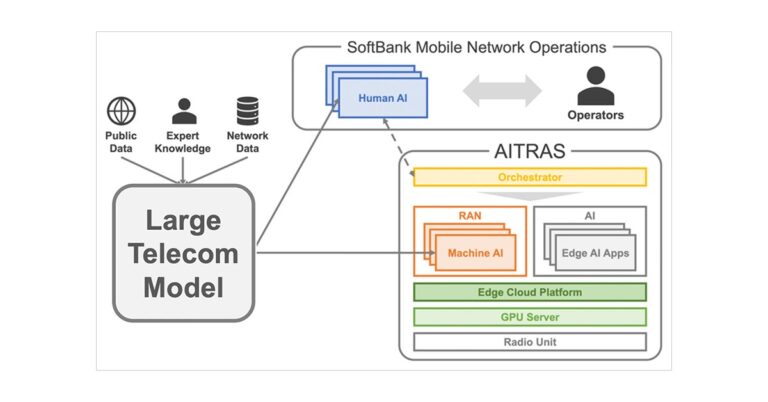InfiniG, a leader in in-building mobile coverage solutions, has successfully deployed its Mobile Coverage as a Service (MCaaS)™ at Parkside Elementary School. With support from partners like AT&T, Intel, and T-Mobile, this initiative ensures enhanced connectivity, communication, and safety for over 600 students, teachers, and staff. The deployment aims to bridge the digital divide in education by improving access to modern learning tools and AI applications.
Addressing Connectivity and Safety Challenges at Parkside Elementary
Before InfiniG’s deployment, Parkside Elementary faced significant communication challenges. Administrators and staff struggled with inconsistent mobile coverage, often needing to walk long distances just to make a call. This lack of connectivity posed a safety concern, especially during emergencies when immediate communication is vital. Additionally, students from underprivileged backgrounds lacked the necessary technology and internet access, further widening the digital divide in education.
InfiniG’s Private Network Solution for Enhanced School Connectivity
InfiniG implemented its MCaaS solution, a turnkey private network using CBRS (Citizens Broadband Radio Service) shared spectrum, ensuring seamless mobile coverage throughout the school building. This private network supports mobile devices for students, staff, visitors, and emergency responders, enhancing both daily communication and emergency response capabilities.
The school is now equipped with Intel-based laptops and tablets, enabling the use of AI translation tools to assist multi-language education. By keeping data local, this private network ensures high levels of security and privacy, which is crucial for schools. With this technology, students and teachers now have access to advanced learning tools that promote inclusivity and safe digital environments.
Improved School Safety and Connectivity: Success Story at Parkside Elementary
Jason Eyre, Technology Department Coordinator for the Murray School District, expressed how this new solution has “revolutionized” Parkside Elementary’s connectivity. Before InfiniG’s installation, communication was unreliable, with some areas of the school lacking any signal. Now, reliable mobile coverage is available throughout the school, significantly improving both educational and emergency communication.
Why InfiniG Chose CBRS for Parkside Elementary’s Mobile Coverage
The solution relies on InfiniG’s MCaaS, which leverages the CBRS shared spectrum. This spectrum allows for cost-effective and efficient network deployment. The use of a private network ensures the school’s data is secure, protecting sensitive information while delivering superior performance. Intel’s devices further enhance the network’s functionality by enabling AI tools, which support diverse educational needs, including multi-language learners.
Key Benefits of InfiniG’s MCaaS: Safety, Learning, and Equity
The benefits of InfiniG’s solution are immediate and impactful:
- Enhanced safety: Reliable mobile coverage allows for instant emergency communication, ensuring a safer environment for students and staff.
- Improved learning: Students now have access to Intel-based devices with AI applications, such as translation tools, which help create a more inclusive and engaging learning environment.
- Reduced digital divide: By providing reliable technology, the project supports students from underprivileged backgrounds, ensuring equitable access to digital education tools.
How InfiniG’s Mobile Coverage is Transforming Education and Other Sectors
The success at Parkside Elementary showcases the potential for private networks to transform not only educational institutions but also industries like healthcare, hospitality, and industrial automation. With AI tools and digital transformation projects, schools and other sectors can leverage 5G and CBRS to enhance operations and ensure greater connectivity.
InfiniG’s Leadership in Providing Mobile Coverage Solutions for Schools
InfiniG is at the forefront of providing cost-effective and reliable in-building mobile coverage solutions through its Mobile Coverage as a Service (MCaaS) platform. The company’s focus on leveraging CBRS and shared infrastructure ensures that both building owners and mobile operators benefit from seamless mobile connectivity. InfiniG has played a crucial role in designing and deploying the system at Parkside Elementary, setting a new standard for school connectivity nationwide.
Collaborative Success: How Intel, AT&T, and T-Mobile Supported Parkside’s Network
InfiniG collaborated with Intel, which supplied the laptops and tablets that support AI applications, and AT&T and T-Mobile, which provided network infrastructure. Together, these partners helped ensure a comprehensive and robust solution, addressing both the technological and educational needs of the school.
Parkside Elementary’s Mobile Network Fully Operational for the New School Year
The mobile network at Parkside Elementary is fully operational, offering uninterrupted coverage for students, staff, and emergency services. The project was deployed in just four weeks, highlighting the efficiency of InfiniG’s technology. The installation of the MCaaS system began in July 2024 and was completed in time for the new school year in August 2024. The swift deployment ensures that the school can benefit from the new network throughout the academic year and beyond.
InfiniG’s Role in Advancing School Connectivity and Safety
Caroline Chan, VP of Intel Network and Edge Group, emphasized the importance of this initiative, stating, “Our collaboration with InfiniG at Parkside Elementary opens the door to new and exciting private network applications, demonstrating how technology can provide equitable access to education.”
InfiniG’s CEO, Joel Lindholm, also highlighted the significance of this project, explaining that it serves as a blueprint for future deployments across schools and industries, further advancing the potential of 5G Private Networks in shaping connected environments.
Conclusion
The deployment of InfiniG’s MCaaS solution at Parkside Elementary not only improves safety and communication but also bridges the digital divide by providing advanced learning tools and technology to underprivileged students. This project sets a precedent for how 5G and Private Networks can enhance education and other industries, driving forward a connected and inclusive future.























